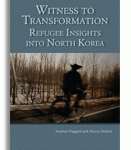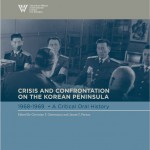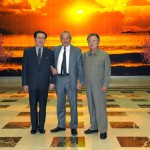From the Choson Exchange web page:
We are looking to build our knowledge pool in the areas of contract negotiations, microfinance and bond markets as there have been requests for knowledge assistance in these areas from Pyongyang. We are told that North Korean firms need to negotiate more effectively with their Chinese counterparts, and require legal training to do so. The fundamentals of micro-finance and bond markets are also of interest to some financial organizations. We expect initial programs for these areas to take place in April to May this year.
The executive director of Choson Exchange, Geoffrey See, also wrote the following article in the East Asia Forum:
Choson Exchange recently prepared a program for North Korean students to learn business, finance and economics overseas through university courses and internships.
They consulted a range of North Koreans on how it should structure such a program and ‘the Australia National University’ often came back as the model to follow. Up until 2006, ANU hosted North Korean trainees studying economics under programs supported by international and Australian aid agencies. The Australian exchange program was clearly well-regarded by outward-looking North Koreans.
But what would Australia gain from such programs?
A resolution to the constant series of crises on the Korean peninsula is obviously in Australia’s interest. Conflict on the Korean peninsula can destabilize the region and in a worst-case scenario draw China and the United States into a military conflict involving Australian troops. This would cause incalculable harm to the Asia-Pacific economy because of its impact on all the major Northeast Asian economies, not to mention the human cost of conflict. Australia also has long and particular historical interests in commerce with North Korea.
There are some things that Australia can facilitate for North Korea which is in their mutual interest, but which neither the United States nor South Korea can provide anytime soon. The opportunity for North Korean students to study economics, business or law in Australia in long-term university programs is one such crucial shared interest. Yet such programs are currently impossible because of autonomous sanctions in place since 2006 that deny visas to visiting North Koreans. This policy is counter-productive. It trades off the ability to shape longer-term outcomes on the Korean peninsula for short-term public displays of opprobrium. The only countries whose sanctions can hurt North Korea are the countries that actually trade with it. This policy is also unusually harsh of Australia. The United States takes a more nuanced stance by allowing visits by North Koreans for some purposes while publicly preventing political delegations to express its political support for US allies, chiefly South Korea. Similarly, Australia can publicly express its disapproval of current North Korean activities alongside efforts to develop exchanges that shape a future that goes beyond the present stalemate.
These educational exchanges provide Australia with an effective way to shape longer-term dynamics on the Korean peninsula. One way the Korean crisis will end peacefully is when North Korean elites calculate that benefits of economic integration with the rest of the world are great enough to make the costs of confrontation unsustainable. Overseas education can shift this cost-benefit calculus because it equips a new generation of North Korean leaders with the knowledge and the networks to benefit from international trade and integration.
Choson Exchange recently placed a North Korean student in an internship with an international consulting firm. Without such networks, the opportunity would not have materialized. The student also needed coaching on how to explain why his prospective-employer might find value in taking him on. He assumed that a good score on an international English test was the qualification he needed even though most selective employers see fluency as a minimum threshold, rather than a core selling point. This experience helped us see things from the North Korean perspective: there are hardly any commercial benefits to speak of when one lacks knowledge and networks to realize those benefits.
Now is the time to help build this knowledge and network base. North Korea has been active over the past year setting up institutions to promote economic development. This includes the State General Bureau of Economic Development, the Daepung Group, and the State Development Bank. Choson Exchange has led finance workshops with the State Development Bank, and Bank managers agree that training is needed and appreciated. By helping to educate the next generation of North Korean businessmen, economists, financiers or lawyers who will eventually fill these institutions, Australia can play a role in shaping these emerging institutions in North Korea, institutions that could have important ramifications for how North Korea interacts with the rest of the world in the future.
Australia has the opportunity to redefine how such exchanges are conducted. To maximize impact in developing institutions in Pyongyang, we need to think in terms of a “talent pipeline.” We need interlinked programs targeted at different age-groups: training workshops targeting senior or middle management at these institutions, overseas scholarships targeted at university students or recent graduates, and a way to bring both groups together to help maximize opportunities for scholarship recipients to move into the emerging institutions.
Australia has the base from which to take initiatives with North Korea. The North Korean institutions that are looking outwards explicitly seek to build on what has been done with Australia, and specifically through the Australian National University program for training in economics. A comprehensive settlement of the Korean problem is much more likely if we begin again to put this infrastructure in place and help with institutional development in North Korea.



